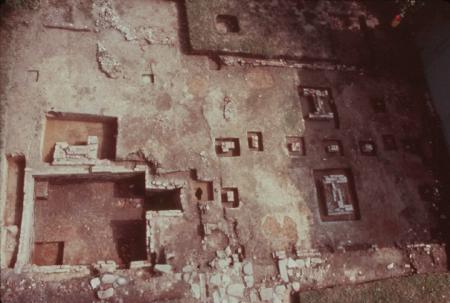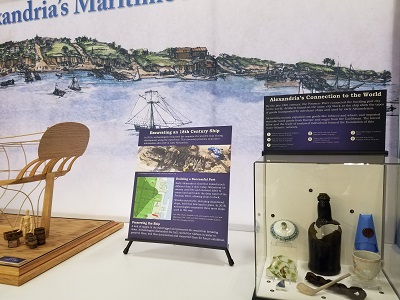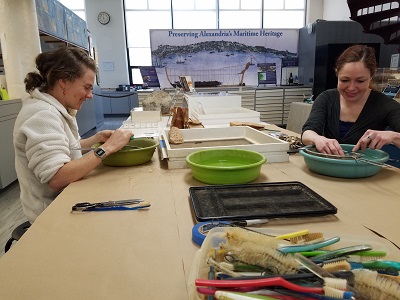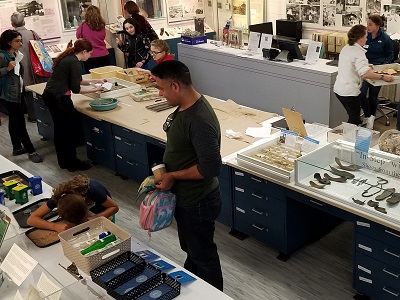Exhibits at the Alexandria Archaeology Museum
Visiting the Museum
In addition to viewing the exhibits, visitors can learn about the archaeological process by talking with volunteers and professional archaeologists at work in the museum’s public laboratory. See what is on view, below.
See Visit Alexandria Archaeology Museum for hours, directions, and all you need for your visit.
A Community Digs its Past: The Lee Street Site
Preserved on the Lee Street Site was a cross-section of Alexandria's history from its founding in 1749 into the 20th century.
The updated exhibit includes artifacts and panels that reveal the archaeological process and the history of Alexandria as seen through the lens of the Lee Street Site (archaeological site 44AX180) and several other waterfront sites.
Updates to the panels, funded in part by the Historic Alexandria Foundation, make the exhibit more accessible and tell a more inclusive history of our port city. The main panels can be viewed online.
Hayti: A 19th Century Free Black Neighborhood

Archaeologists excavated the Coleman Site in the 1980s before new townhomes were built on the lots of 418-422 South Royal Street. The site included evidence of early 19th century free Black households. These homes were part of Hayti, one of the oldest neighborhoods in Alexandria. Artifacts and historical research offer a glimpse into the lives of people who lived there.
Learn more about Alexandria's African American Community.
Preserving Maritime Heritage

Development along the waterfront has led to significant discoveries by archaeologists, including the remains of four historic ships. Follow the story of the city’s maritime heritage from excavation to preservation. View a model of one of the historic vessels and find out how archaeologists are answering questions about the age and use of the ships, and what role they may have played in Alexandria’s 18th and 19th century economies.
Learn more about Archaeology on the Waterfront.
Technology Tells a Story
For thousands of years, Native Americans moved through the region, trading and drawing resources from the land and river. This exhibit case maps past and present Native American tribes and nations and shows how archaeologists learn more about the lives of people living in the past by studying changes in stone projectile point technology. This exhibit case was made possible by Friends of Alexandria Archaeology.
Learn more about Archaeology and Alexandria's First People.
The Public Laboratory

The museum is also home to the Alexandria Archaeology lab. On certain days you may see professional archaeologists and trained volunteers washing and identifying artifacts from city archaeology sites, or researching the history of people and properties using tax records and other primary sources.
The Museum exhibits some artifacts, and lends others for exhibition at other museums. Most of the collection is housed in a climate-controlled storage facility, in archival packaging. The Alexandria Archaeology Storage Facility houses more than 3,000 boxes, containing more than two million individual artifacts.
Hands-on Activities

Archaeology is more than excavation. Discover how archaeologists learn from sites by testing your skill at artifact identification and analysis, dating wood with dendrochronology, and mending ceramics with our modern broken plates.